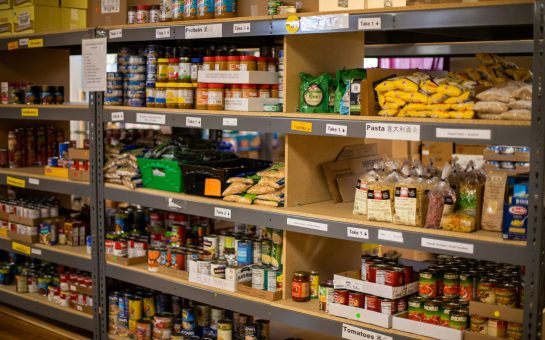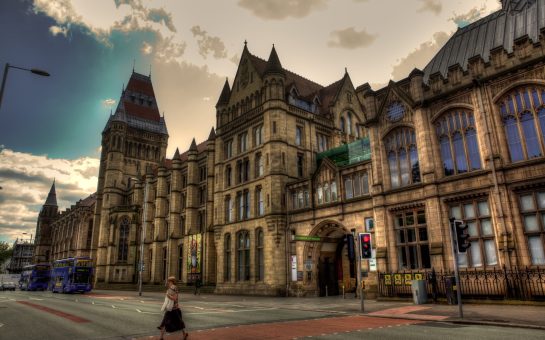Manchester’s art community has lost another of its great painters.
William Turner, who passed away last week at the age of 93, went decades without the recognition he deserved before achieving national acclaim during the latter years of his life.
Turner often painted scenes in Manchester, Stockport and Salford, depicting the industrial North-West landscape, with cotton-mills, factories and buildings featuring heavily in vivid reds, oranges, yellows and blues to help bring back some life into the smoky reality of his scenes.
Told by his close friend, L.S. Lowry, to ‘paint what you see’, Turner’s canvases include Oxford Road, Princess Street and the Coronation Street set in Manchester, as well as Princes Street and Mersey Square in Stockport.
Bill Clark, owner of Clark Art Ltd, an art gallery which sells many of Turner’s works, said: ‘Bill had the opportunity to paint the Coronation Street set when it was first built and offered to sell it to the producer, but he didn’t want it.
“I bet he regrets turning him down now that Bill’s art is so collectable.”
Turner was fascinated by Stockport’s remarkable 27-arch railway viaduct -one of the largest red-brick structures built at the time – featured in many of Turner’s works.
Mr Clark commented: “He always painted a stream engine going over the viaduct with plumes of smoke; he never put in electric trains.”
But Turner’s works didn’t just stop at the industrial landscapes of the North-West; there are portraits, still life and scenes from a visit to France.
Turner’s inspiring paintings were produced from a phenomenal memory, capturing the essence of a scene in a simple brush stroke, and was a master of composition, producing an image which is instantly recognisable to the Northern observer.
A lover of Jazz and an avid cyclist, Turner (often cycling over 100 miles a week) was always looking sideways at the buildings on his bike, which gave way to movement and fluidity in his works, along with public buildings that are curved, distorted and appear to sway on the canvas.
His art was largely self-taught, but Turner often visited the Crane Kalman Gallery, Manchester, during the fifties and sixties, where he was influenced by the French Fauves, including Vlaminck and Chagall as well as the German Expressionists such as Max Beckmann.
Lowry was a great admirer of Turner’s work, visiting all of Turner’s shows until his death in 1976, and the two became good friends.
He became the only person to have painted Lowry whilst he was still alive.
Turner’s early work achieved some critical acclaim and was shown in high-profile shows in the North, but his work was not met with the same praise when he went down for London shows.
When Turner showed in London, Mr Clark said: “They sent him around in circles. You see they already had one Northerner, Lowry, and they didn’t need another on”’
Turner was viewed with antipathy by London critics and at one West End exhibition failed to sell a single picture.
After a less than lukewarm welcome, Turner returned to the North where he became a part-time painter and the Head of Art at Cheadle Hulme School, giving rise to artists such as Helen Bradley.
Turner’s forgotten brilliance was unearthed when he was in his 80s by David Gunning, owner of an art shop in Todmorden, Lancashire, and Turner became a national success.
In 2010, Mr Clark released a biography of William Turner’s life, and today hiss art sells for up to £50,000.
Mr Clark, who was also a friend of Turner’s, said: “He was the last of the great northern painters and his legacy is a wonderful body of work which can be enjoyed by future generations.”
For more information about William Turner’s art, or to buy his biography, visit: http://www.clark-art.com/william_turner/1897
Image courtesy of Clark Art, with thanks.
For more on this story and many others, follow Mancunian Matters on Twitter and Facebook.



